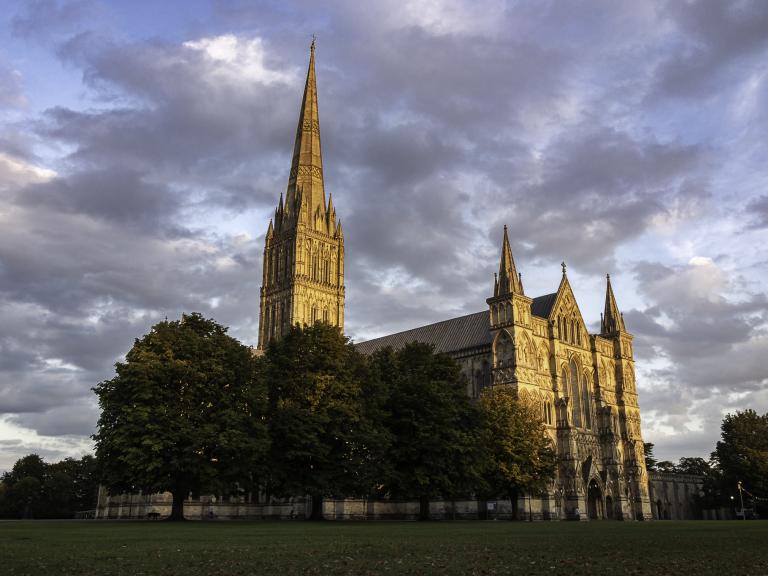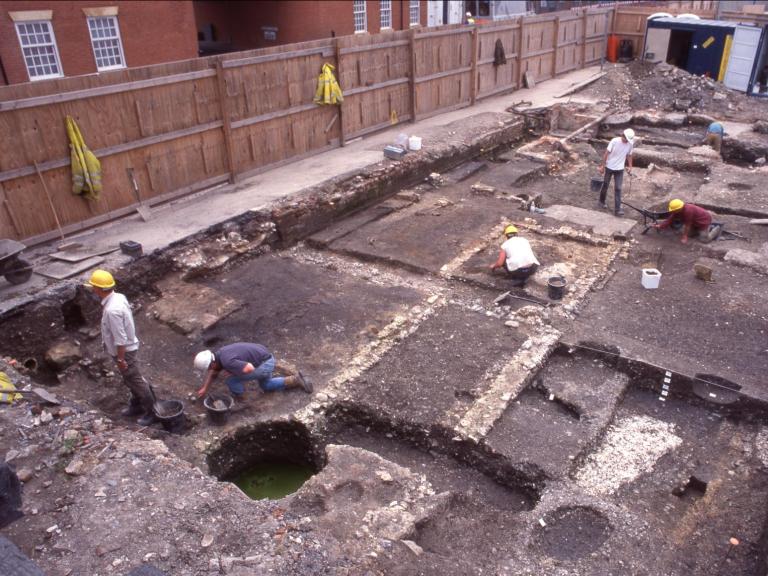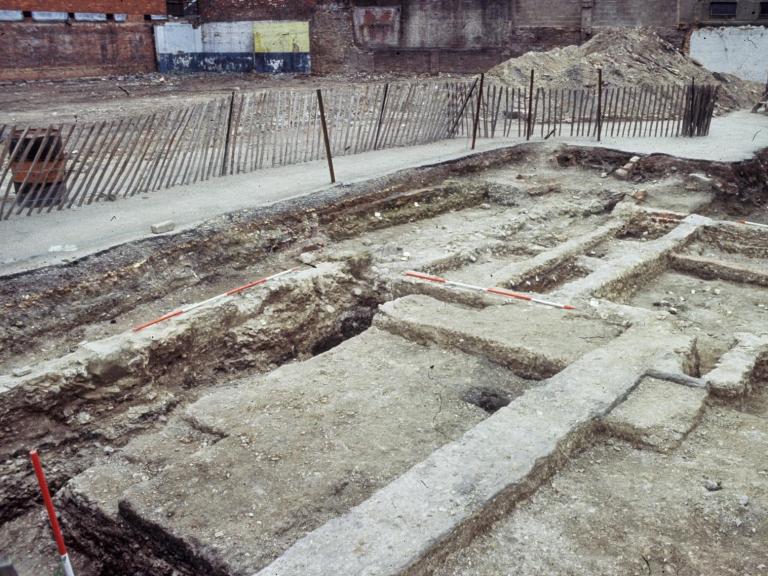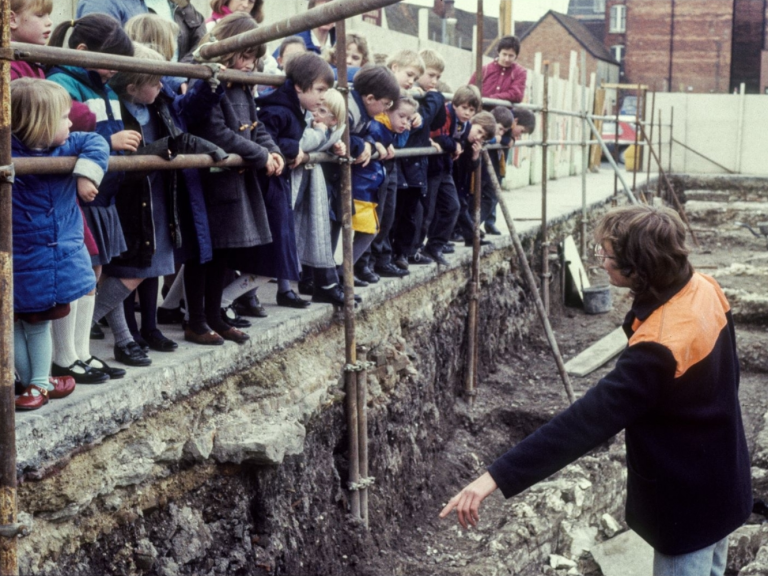So far in this weekly series we have considered Wessex Archaeology’s work in Salisbury on a site-by-site basis highlighting aspects of the archaeology and what that tells us about the city and the people who lived there. Inevitably some excavations have provided more positive results than others although it is rare to undertake work that is totally unproductive.
Some results, especially those from small trenches, make more sense when they are placed in context with work from larger excavations. We can see this happening at Gigant Street Car Park (WA Project 30182) - W129), in the Trinity Chequer, an area we have featured in Salisbury Sites 19-23. This small project involved four separate evaluation trenches W129A-D. Trenches A and B, at Nos. 43 and 65 Brown Street produced results which showed that timber framed buildings had been constructed on the street frontage and on the same line from at least the 14th century and led to further work at Nos 39 and 47-51 Brown Street.
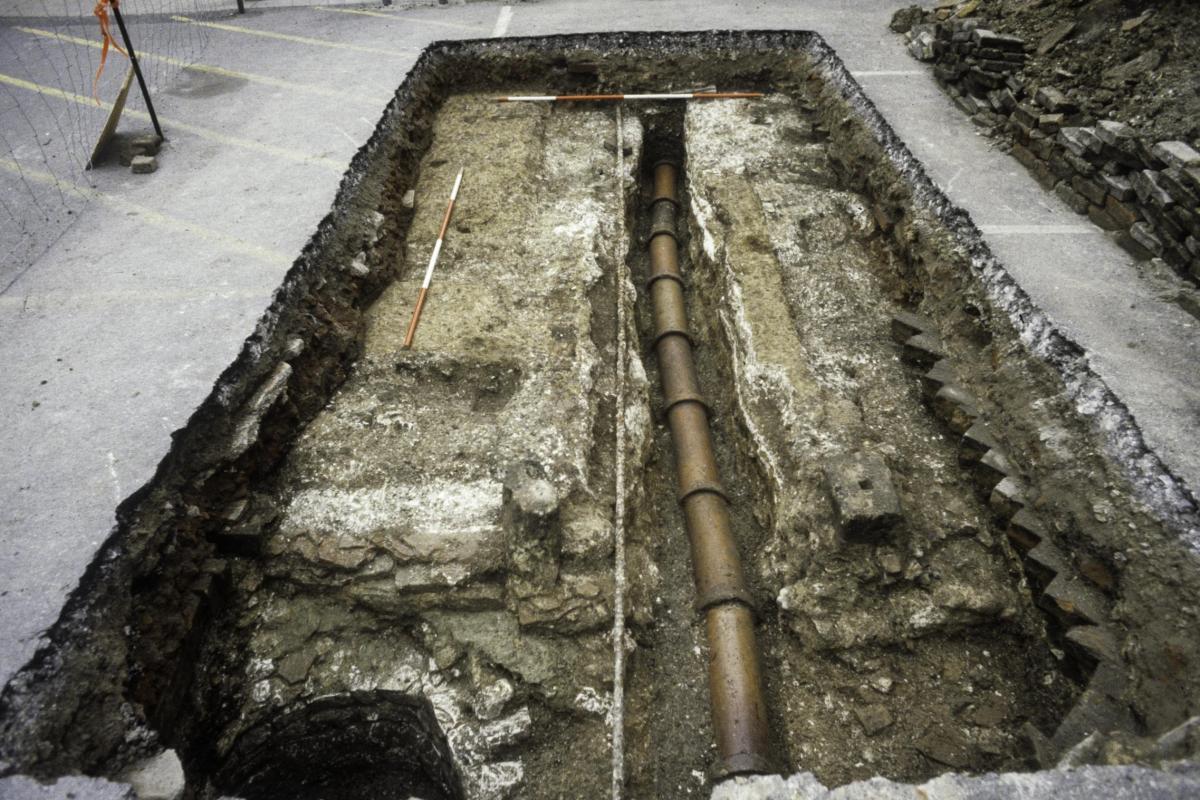
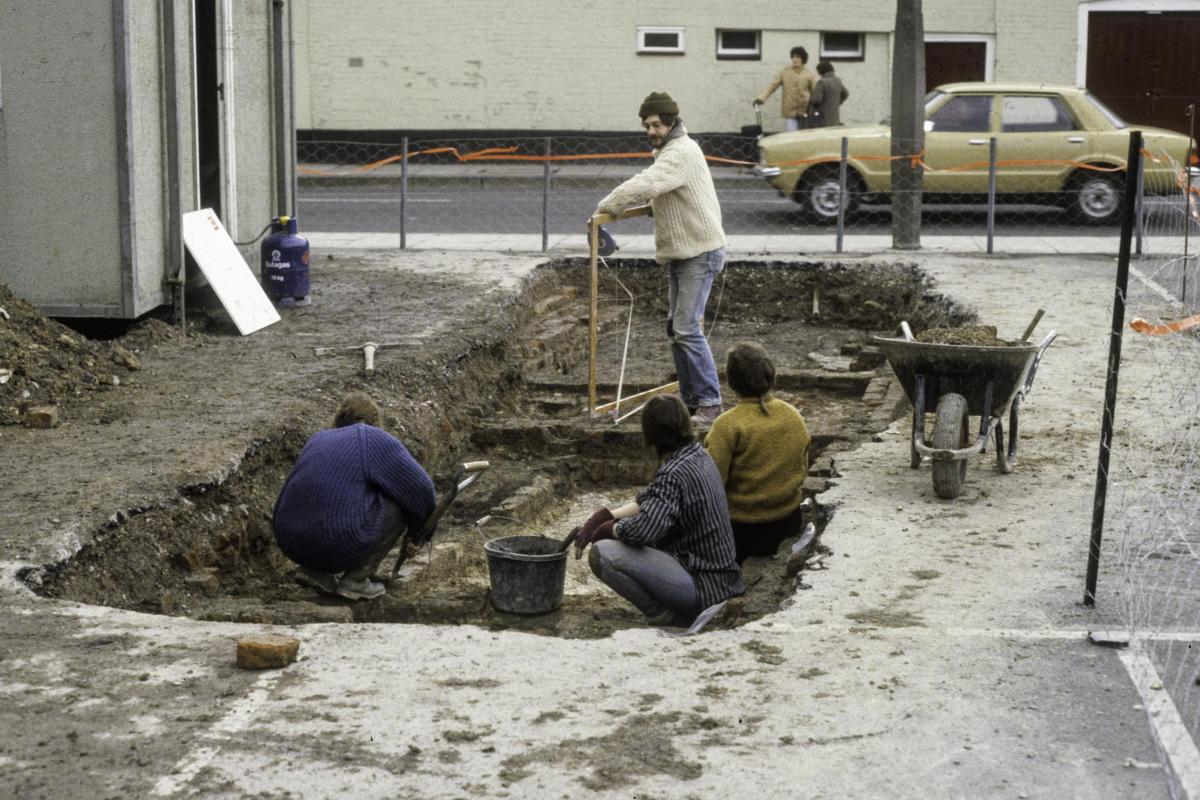
Gigant Street Car Park, Trench A (left) and B (right)
Trench W129C, located near the Trinity Hospital precinct, located a flint wall foundation, which may have been part of the medieval hospital. Layers in Trench W129D were heavily disturbed, however medieval activity was demonstrated by a flint wall foundation and compacted chalk floors which overlay a sherd of probable 13th century pottery.
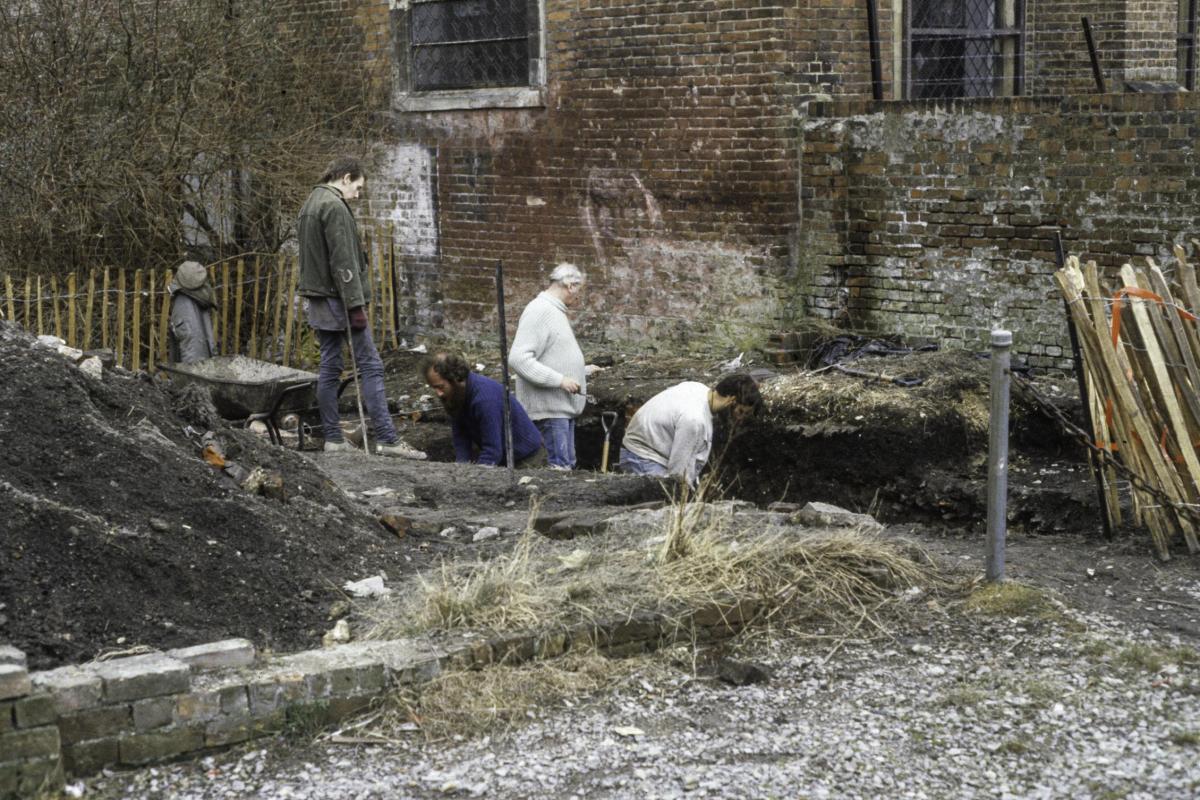
Gigant Street Car Park, Trench C
The former brewery premises were also investigated at 68 Gigant Street (WA Project 31552) - W192. The results established that buildings, which were subsequently replicated at the Anchor Brewery site (Salisbury Site 20), were present along Gigant Street. Initial development could be dated to the 13th and 14th centuries when timber framed buildings dominated the city skyline. These buildings underwent various modifications and rebuilds until they were ultimately replaced by brick buildings in the 18th century.
Small archaeological projects have also been undertaken in the peripheral parts of the medieval city. One of the first excavations undertaken by The Trust for Wessex Archaeology, now Wessex Archaeology, took place at Culver Street (WA Project 30882) – W64 in 1984. Two trenches were dug to confirm the nature of medieval development on the eastern fringes of the city and to learn more about a ditch which had been documented in the area.
The first trench revealed a massive build-up of unstable soil, over 3 m deep, which made the base of the trench inaccessible. The second trench was heavily disturbed by modern building foundations but traces of two buildings with flint and tile foundations and clay floors remained which were associated with 13th and 14th century pottery. No trace of the ditch was found.
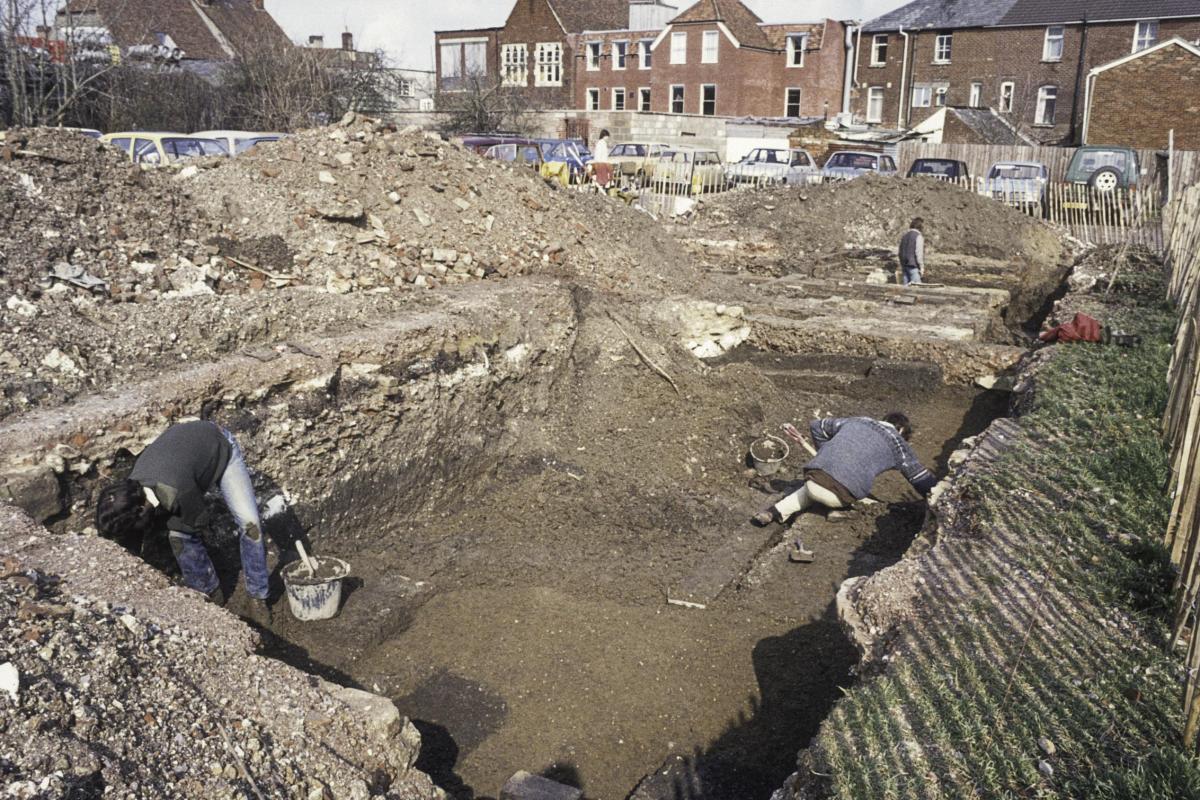
Excavations by Wessex Archaeology at Culver Street
Culver Street lies a short distance from St Martin’s church, which, as we saw at Damascus House (Salisbury Site 25), was once a centre of Anglo-Saxon settlement, but about which we know next to nothing. Development work in the area, therefore attracts, considerable interest from archaeologists. Observations at The Stone Mason’s Yard, 10 Tollgate Road (WA Project 57100) of four small test pits found no archaeological traces. Similarly, a watching brief at the junction of Tollgate Road and Fowler’s Hill (WA Project 102391) was equally unproductive, the report concluding that any traces of Anglo-Saxon settlement had been removed by former development on the site.
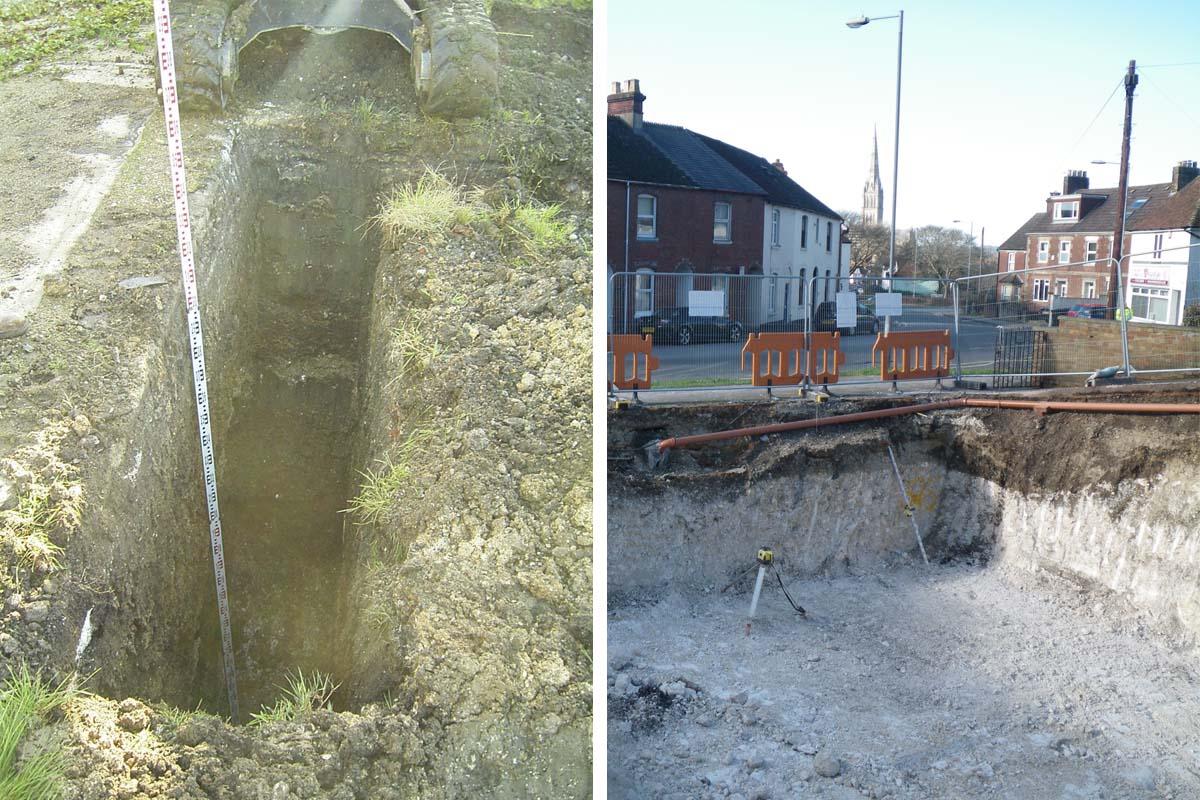
Excavations at The Stone Mason’s Yard, 10 Tollgate Road (left) and (Tollgate Road and Fowler’s Hill) right
The search for Anglo-Saxon remains fared no better in a small trench at 82 St. Ann’s Street (WA Project 49846). This site also lay on the projected line of the city rampart, of which there was again no evidence.
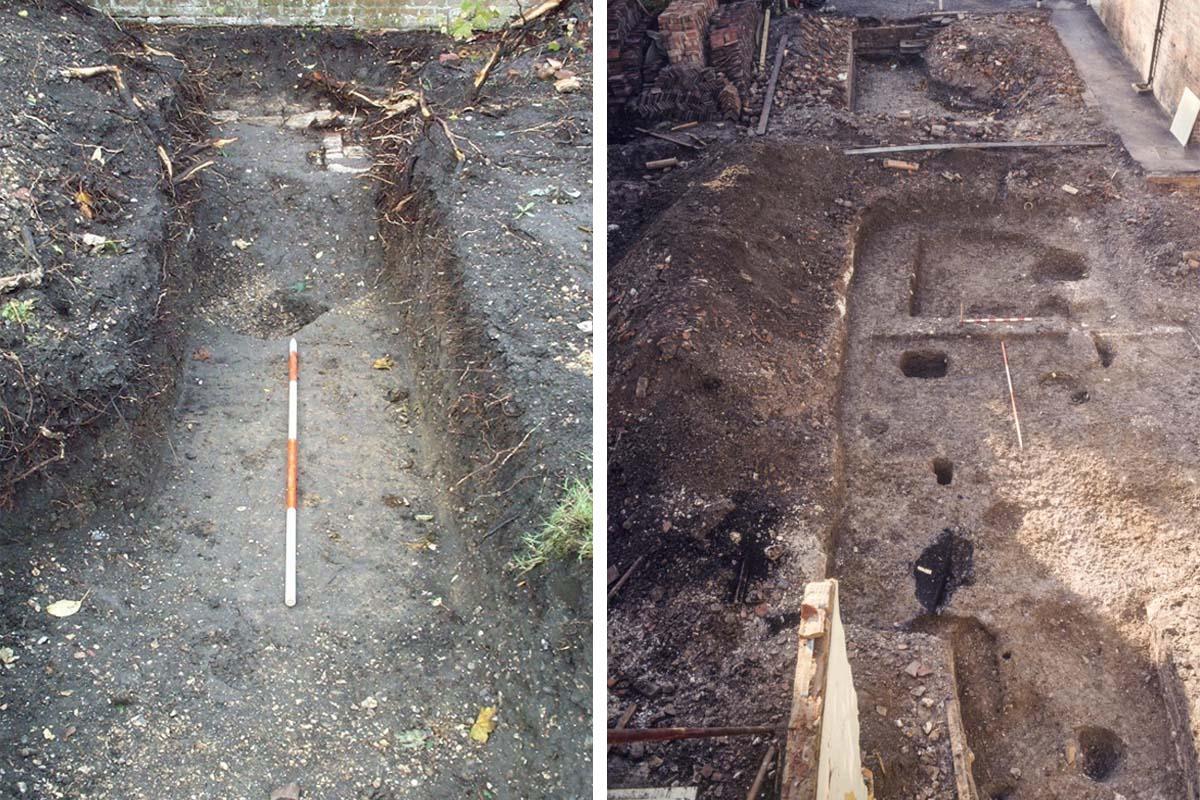
82 St Ann's Street (left) and 8-10 St Ann's Street (right)
Further down the street at 8-10 St. Ann’s Street (WA Project 30182) – W116 two small trenches were excavated behind the street frontage and adjacent to an extant 14th century house. The results were limited however post holes and floor levels suggested that former rudimentary buildings had once stood on the site. The layers were poorly dated but sufficiently interesting to confirm the value of exploring areas beyond the city centre into the urban margins.
Religious foundations formed a vital part of medieval life and were set up in towns and cities to dispense charity and preach to local communities. The Franciscan friary in Salisbury was located on the south east side of St Ann Street adjacent to the cathedral precinct. Founded in 1230 it was dissolved in 1538. No archaeological investigations were undertaken when residential flats were erected in the 1960s, as a result of which we know virtually nothing about the plan of the priory itself. The line of the precinct wall, on the north side, was projected to pass beneath the Vale House Dental Surgery, 44 St. Ann Street (WA Project 59610.01) and two small areas were examined to test the theory. Sadly, both trenches were of insufficient depth to expose significant archaeological layers.
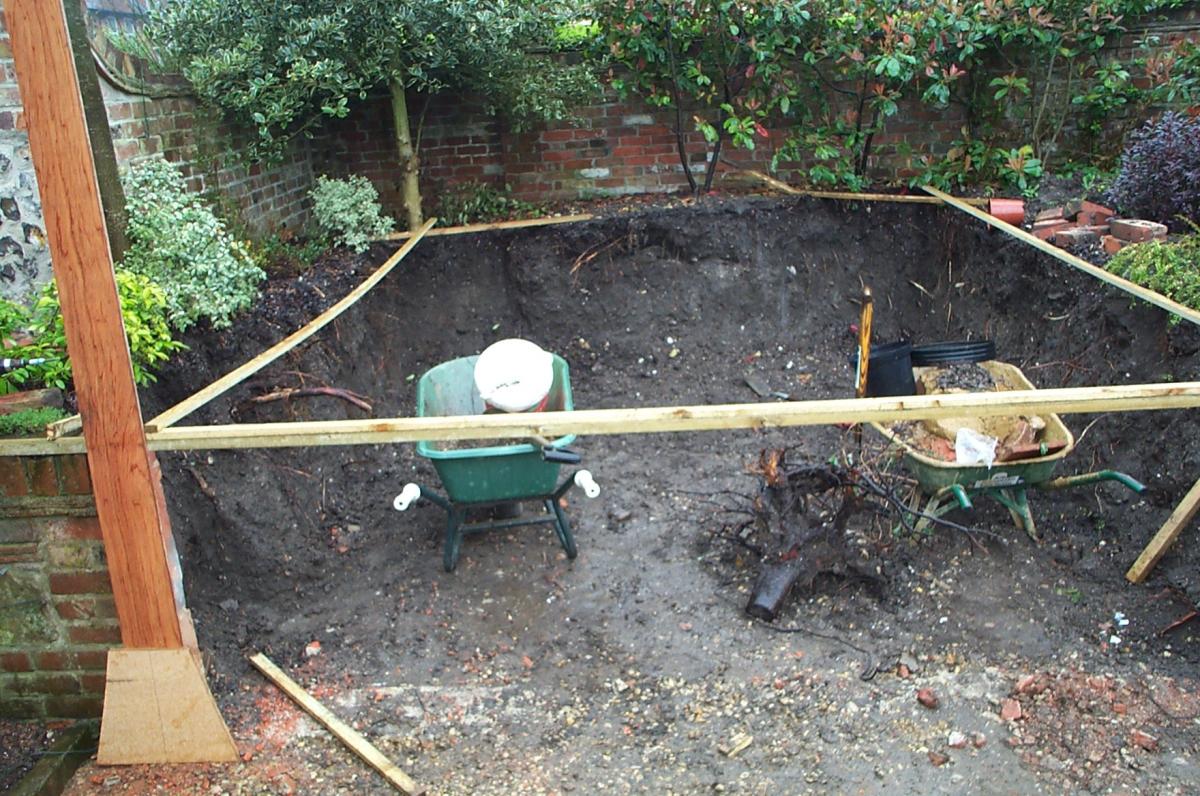
Excavations at Vale House Dental Surgery, 44 St Ann Street
Other trenches have been dug in the area around the friary including one at Greyfriars Close (WA Project 46877), on the southern fringes of the precinct. This area, known as Bugmore, was an area of low-lying swampy ground bordering the river. Two trenches confirmed that the area had remained marshland until dumps of rubble had been brought in during the 19th or 20th centuries to consolidate the ground.
The street frontage on the east side of the friary precinct, occupying the principal route south out of the medieval city, perhaps not surprisingly, appears to have been settled during the medieval period. A small test trench on the east side of Exeter Street at 115 Exeter Street (WA Project 43122) exposed a rammed chalk floor with medieval pottery.
These small pieces of work have all made full use of opportunities to examine land that may be destroyed by redevelopment or not become available again for generations. The areas were often restricted in extent or by the depth to which archaeologists could dig. Elsewhere archaeologists arrived too late to record layers that had already been removed by previous development. Nevertheless, when they are considered together, they have added to knowledge of the medieval city, distribution of population and extent of the settlement. Next week we move into new areas – the Cathedral close.
By Phil Harding, Fieldwork Archaeologist
Can you support our work to share the story of Salisbury with the community? Please consider supporting our new film, Salisbury Uncovered.
